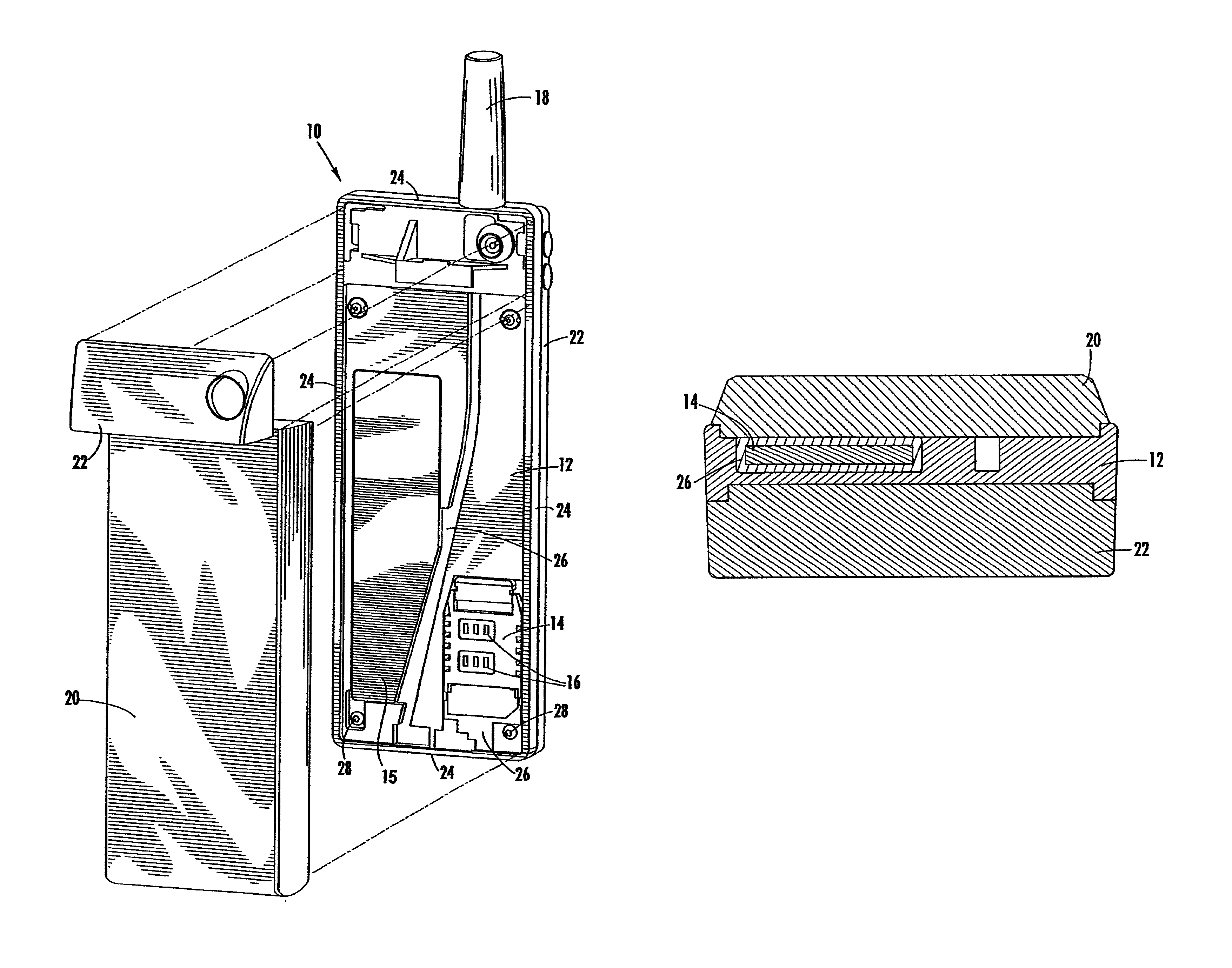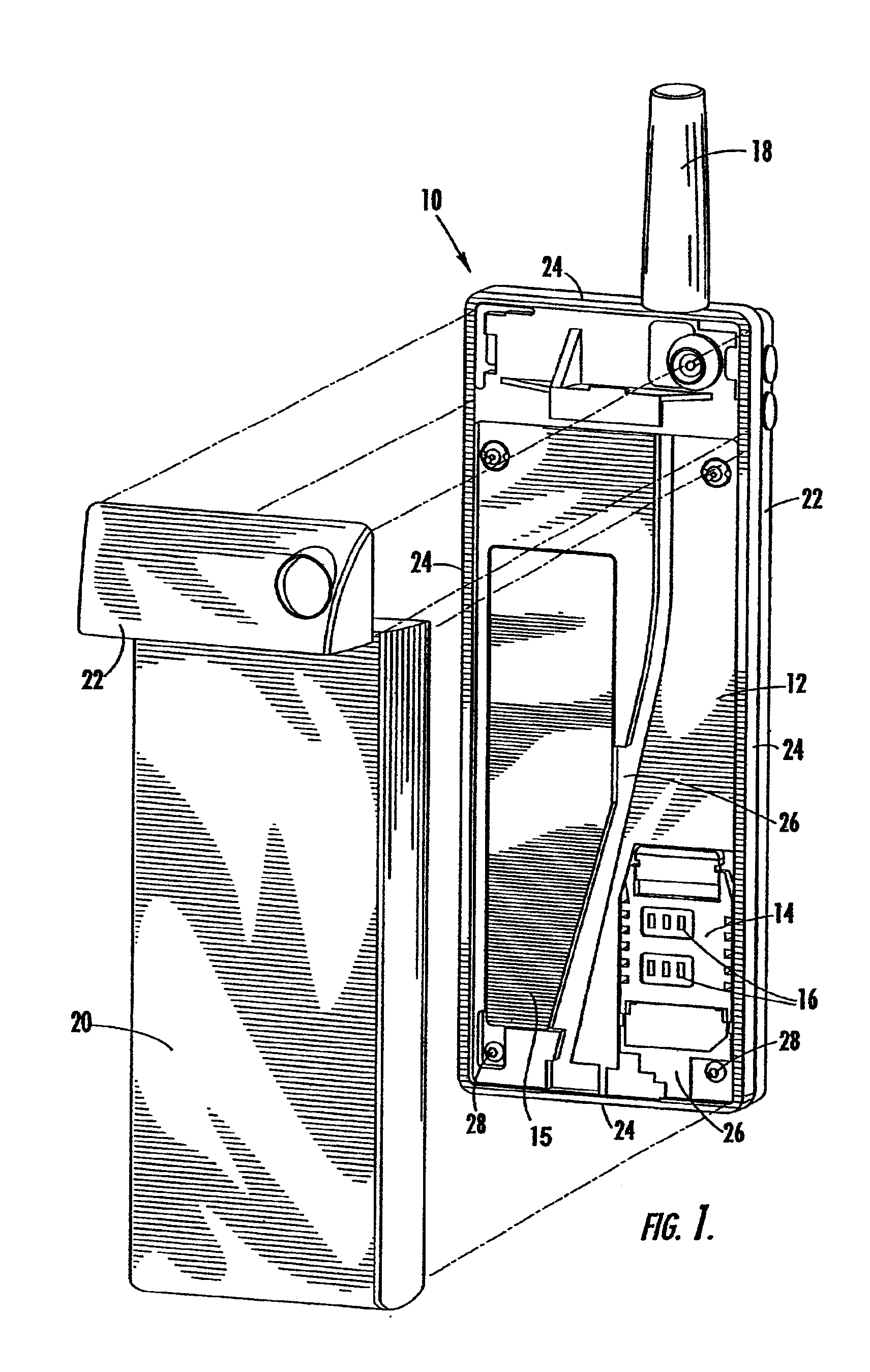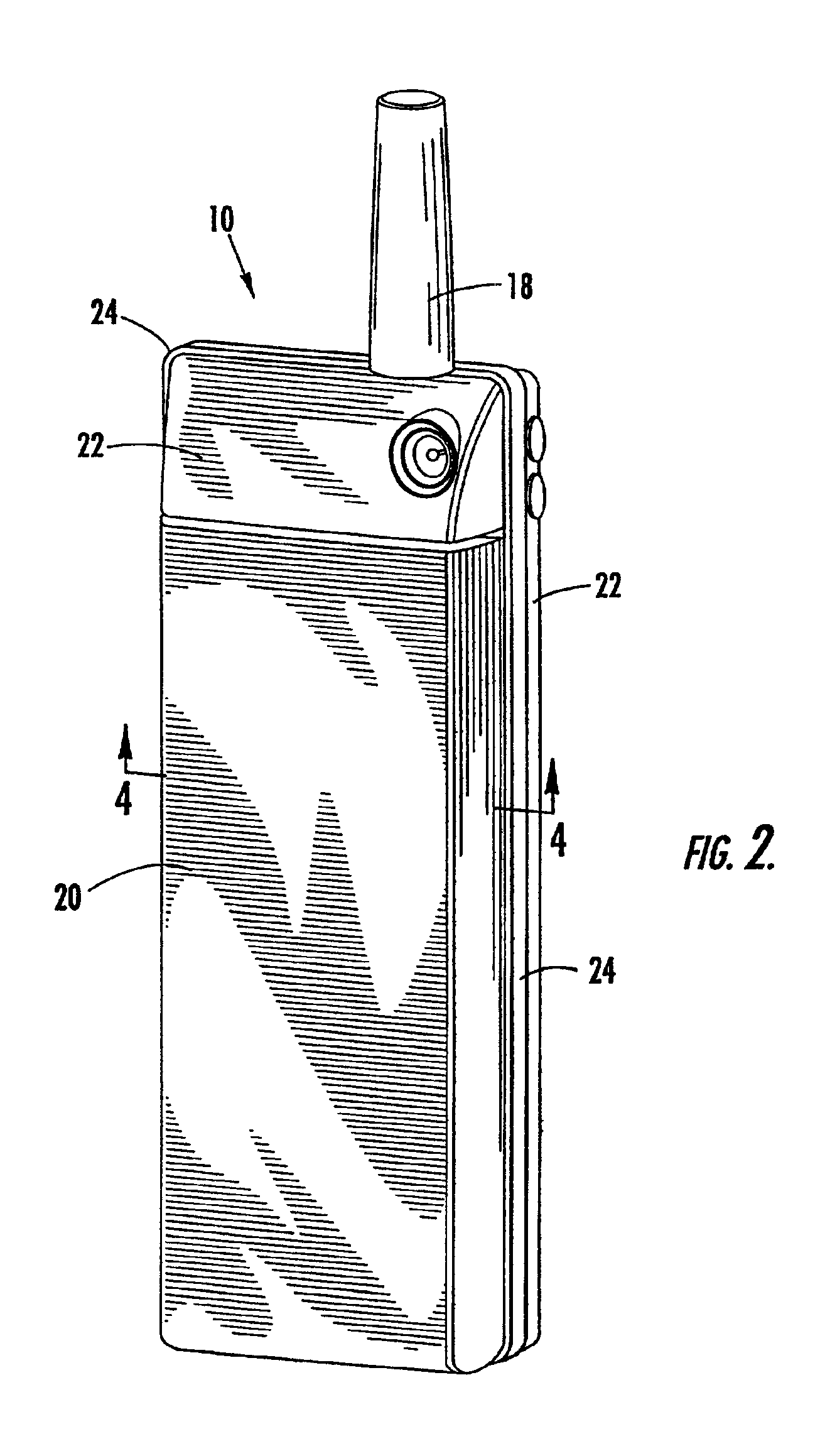Method of manufacturing a structural frame
a manufacturing method and technology for structural frames, applied in the direction of electrical apparatus construction details, conductive pattern formation, modification by conduction heat transfer, etc., can solve the problems of destroying the microprocessor device itself or other components proximal to the microprocessor, and increasing the size of the device. , to achieve the effect of enhancing thermal dissipation
- Summary
- Abstract
- Description
- Claims
- Application Information
AI Technical Summary
Benefits of technology
Problems solved by technology
Method used
Image
Examples
Embodiment Construction
For illustration purposes only, and by way of example, the present invention is shown to be employed for a cellular telephone. As will be seen below, the structural frame for the electronic device of the present invention can be easily employed in the fabrication of other electronic devices, such as laptop computers and personal digital assistants, for example. The invention will be described in detail below in the context of an application for a cellular telephone; however, such disclosure is not intended to limit the scope of the present invention to such an application of the present invention.
The preferred embodiment of the present invention is shown in FIGS. 1-4. In FIG. 1, an exploded perspective view of the preferred embodiment is shown to include an electronic device that has a snap together modular construction in the form of a cellular telephone 10. The cellular telephone 10 includes a structural frame 12 with a circuit board 14 mounted thereupon. A number of heat generati...
PUM
| Property | Measurement | Unit |
|---|---|---|
| thermally conductive | aaaaa | aaaaa |
| thermal conductivity | aaaaa | aaaaa |
| heat | aaaaa | aaaaa |
Abstract
Description
Claims
Application Information
 Login to View More
Login to View More - R&D
- Intellectual Property
- Life Sciences
- Materials
- Tech Scout
- Unparalleled Data Quality
- Higher Quality Content
- 60% Fewer Hallucinations
Browse by: Latest US Patents, China's latest patents, Technical Efficacy Thesaurus, Application Domain, Technology Topic, Popular Technical Reports.
© 2025 PatSnap. All rights reserved.Legal|Privacy policy|Modern Slavery Act Transparency Statement|Sitemap|About US| Contact US: help@patsnap.com



